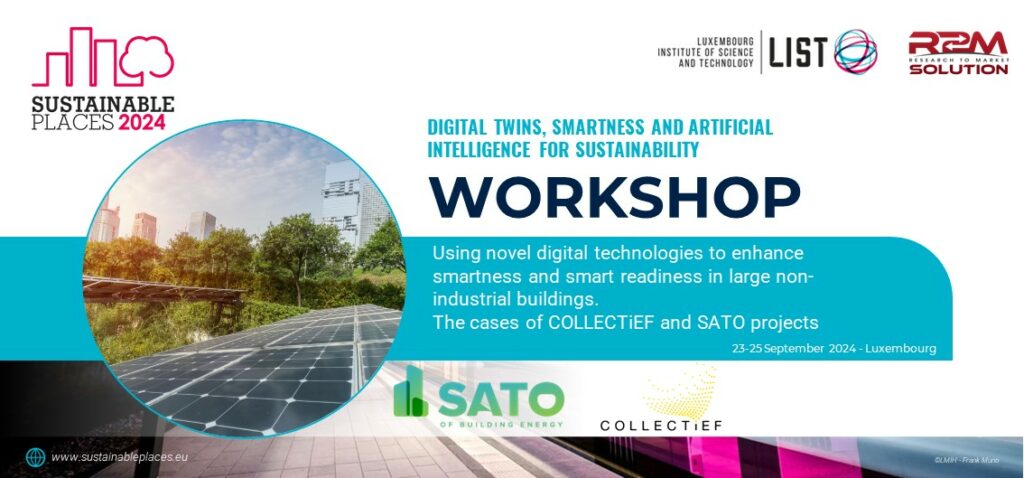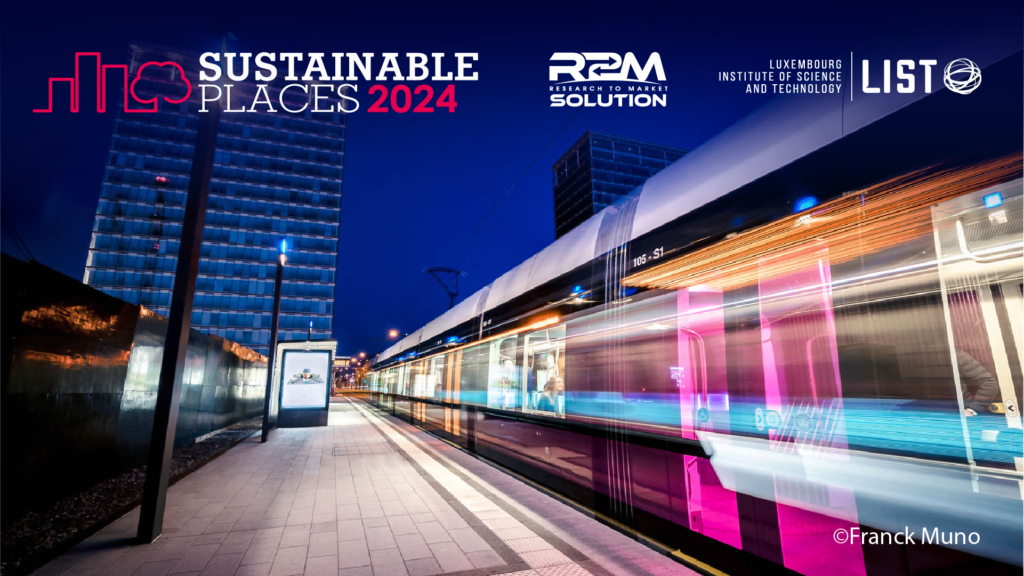Smart Readiness in Large Non-Industrial Buildings
Wednesday 25 September 2024 | 16:00-17:30 | Briefing Room PL | Workshop | Hybrid


Using novel digital technologies to enhance smartness and smart readiness in large non-industrial buildings. The cases of COLLECTiEF and SATO.
This workshop provides a detailed comparison of using advanced technologies, including Artificial Intelligence, Collective Intelligence, Digital Twining, and Predictive Maintenance, to upgrade the outdated legacy systems in building pilots across Europe.
Based on a previously proposed framework developed by the authors, COLLECTiEF calculated the smartness and smart readiness of fourteen pilot buildings across four countries by utilising a modified version of the Smart by Powerhouse and Smart Readiness Indicator assessments, respectively. This framework was developed to differentiate the different building categories per country and enhance the importance of the interaction of the buildings with the grid. Moreover, Smart by Powerhouse provides an overall and replicable comparison of the smartness in a portfolio of buildings. Complementarily, the SRI is used to determine the potential for smartening up buildings based on their technical limitations. This study’s novelty demonstrates how much improvement can be achieved by using dedicated AI (e.g., machine learning) algorithms and CI, which is the basis of COLLECTiEF, to upgrade the buildings’ legacy control systems. Moreover, the study investigates the use of AI algorithms for predictive maintenance when data flows are available. Finally, the study aims to examine the consequences of having data-driven DT to model energy profiles and indoor variables of the indoor spaces, which can impact how the buildings’ systems react towards the users, grid, and their goals for energy efficiency.
The SATO project developed a modular cloud-based platform for self-assessing and optimizing buildings’ energy resources. The SATO platform uses an architecture with four layers: an IoT middleware, a self-assessment framework, a framework of optimization services, and end-user applications and interfaces. The IoT middleware provides integration with buildings for data collection and control and interoperability between building systems. A Self-Assessment Framework (SAF) combines physics and artificial intelligence for building, occupants, building envelope, building systems, and appliances energy KPIs and assessments, covering performance, fault detection and diagnosis, and resource consumption. The optimization services framework leverages the insights from the SAF to provide control and advisory services in four categories: whole building, user comfort, and flexibility. The last layer displays innovative assessment visualizations through mobile, web, and BIM interfaces. Semantic models are employed across the four layers to support data and systems interoperability and to support the autonomous SATO self that discovers, orchestrates, and executes the KPIs, assessments, and services computational tasks. The presentation will briefly overview the SATO project and its fundamental contributions, including an SRI management approach. Specific results on a university library building will display the impact on SRI.
Contributing projects:
Contributing Speakers:
Mohammadreza Aghaei, Norwegian University of Science and Technology – Pedro Ferreira, Faculty of Sciences, University of Lisbon – Vinicius Cogo, Faculty of Sciences, University of Lisbon – Vahid M. Nik, Lund University
Workshop Chair: Mario Cortese, R2M Solution Italy
